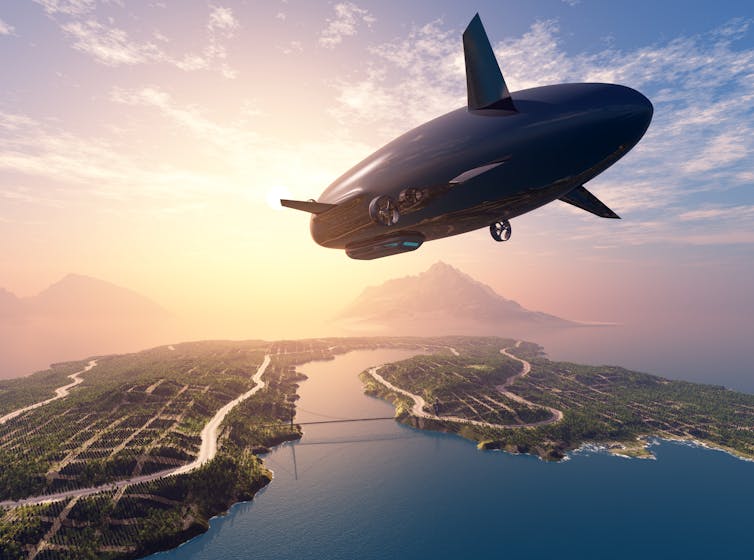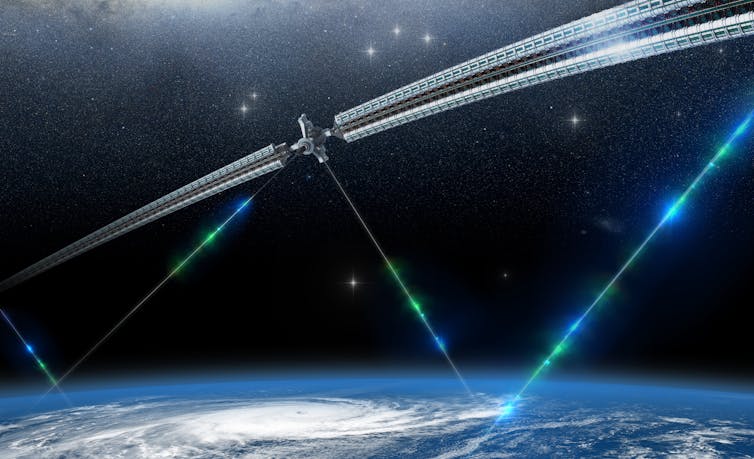If the aviation trade was a rustic, it will rank among the many world’s top ten emitters of carbon dioxide (CO₂). Aviation emissions have risen by 70% since 2005 and as demand will increase in wealthy and poorer international locations, they’re forecast to extend by between 300% and 700% by 2050.
Arresting this incline would be the first step in the direction of a sustainable system of worldwide journey – however how may it’s carried out? A frequent flyer tax could be comparatively simple to implement however it may imply the richest can still afford to fly whereas the poorest are priced out.
Most aircraft passengers are already comparatively rich. Solely 18% of the world’s population has ever flown and in any given yr, an elite three% of the world flies. That’s about 230m folks, however flights carried 4 billion passengers in 2017. So the typical flyer takes eight return flights and aeroplanes rack up seven trillion air miles each year.
Rationing may be a fairer and more practical different.
Flight rationing
Each individual could possibly be allotted a most variety of “flight kilometers” every year. This allowance would improve the longer an individual abstained from flying. The primary yr allocation could be 500km, then the next yr it will be 1,000km and would double yearly. It could take seven years to build up sufficient to fly from the UK to Australia and again.
[Learn: 5 reasons why autonomous cars still aren’t on our roads]
Shopping for a ticket for a flight of any distance would reset the allocation charge to yr one, however the kilometers saved in a “flight financial institution” may nonetheless be used. Anybody not touring may change their flight kilometers for cash, however anybody exceeding their ration could possibly be fined or banned from flying for a while.

Expanded and improved high-speed rail traces may additionally substitute many flights. These journeys could possibly be as quick as aeroplanes in some situations and emit 90% less CO₂. Photo voltaic-powered prepare journeys are already a actuality in Australia. The Byron Bay Firm makes use of photo voltaic panels on trains and platforms to energy onboard batteries and exported 60,000kWh to the grid final yr.
Coupling low-carbon prepare journey with flight rationing would restrict emissions within the quick time period, however individuals are accustomed to travelling half the world in a matter of hours, typically at comparatively low price. The demand received’t go away, so what may substitute carbon-intensive air journey?
Electrical aeroplanes
Most electrical aircraft designs are grounded on the drafting board, however there are some flight-ready plane. The world’s first all-electric business airliner was unveiled in Paris in June 2019. The craft known as Alice and it carries 9 passengers for as much as 650 miles (1,040km) at 10,000ft (three,000 meters) at 276mph (440km/h) on a single charged battery. It’s anticipated to enter service in 2022.
The fossil gas prices of small plane are about US$400 per 100 miles. For Alice, the prices are projected to be as little as US$eight for a similar distance, and if the electrical energy is from renewable vitality – maybe generated by photo voltaic panels on the airport – then the aircraft could possibly be zero-carbon.
How a lot vitality every battery can retailer is increasing rapidly. However there are additionally methods which might make electrical planes more efficient. Capacitors are light-weight batteries that may maintain an enormous cost however just for quick durations. They could possibly be used for takeoff – the most important vitality requirement of a flight – then extra conventional batteries may energy the vast majority of the flight.
Innovation may ship mass electrical flight within the subsequent few a long time, however an alternative choice to fossil-fuelled flight exists proper now.
Convey again the zeppelin?
For so long as people have taken to the skies we’ve had a low carbon different to burning huge quantities of fossil fuels to maintain us up there – balloons. The Hindenburg disaster might have condemned the trade to relative obscurity for nearly a century, however it has by no means actually gone away.
The balloons of most trendy airships are crammed with helium somewhat than the explosive hydrogen used within the Hindenburg. Concentrated helium is lighter than air and when divided into gasoline sacks, the vessel can keep aloft if any are breached whereas propellers powered by versatile photo voltaic panels may also help navigation.

Extracting sufficient helium gas will probably be energy-intensive and there’s a looming global shortage. Fortunately, advances made for the reason that Hindenburg now enable airships to fly on cylinders full of hydrogen jet gas, which is cheaper, lighter, and comparatively considerable.
Utilizing hydrogen for gas has develop into so much safer for the reason that 1930s – a lot in order that it’s now being thought-about for use in the home. Not like jet plane, as soon as airships are aloft they don’t want numerous vitality to maintain them there. At that time, vitality prices develop into comparable to rail travel.
Airships received’t get passengers to their locations very quick – the Hindenburg set the present file for a transatlantic crossing at just under 44 hours – however they do enable time to enjoy stunning vistas. Consider them as a substitute as air cruises. Within the romantic era of early commercial flight, airships had been anticipated to develop into “flying hotels” that might accommodate eating rooms and ballroom dances.
Orbital rings
There’s another choice, however you may battle to imagine it’s doable inside the subsequent thirty years. Nonetheless, the supplies wanted to construct it exist already. An orbital ring is a robust metal cable in orbit simply above the ambiance – 80km above Earth. It rotates, creating forces which attempt to make the ring fly aside into area, whereas gravity tries to drag it right down to Earth.
If the ring is spun on the right velocity, the 2 forces steadiness each other, permitting it to rotate seemingly weightlessly. A “cuff” might be constructed across the cable which might maintain itself in place, unmoving, by magnetic repulsion. The construction could be related to the bottom by cables, with an elevator giving entry to the ring in lower than an hour.

Two Maglev train tracks – which use magnets to maneuver trains alongside with out friction – on the underside of the ring and one other on the skin may transport passengers at unimaginable speeds, reaching the opposite facet of the world in 45 minutes.
If these choices sound unrealistic, then do not forget that our present course of increasing carbon-intensive air journey is unrealistic for avoiding catastrophic local weather change. Daring concepts are one factor, we’d like radical motion to revolutionize how we journey the world.
This text is republished from The Conversation by John Grant, Senior Lecturer in Pure and Constructed Atmosphere, Sheffield Hallam University and Keith Baker, Analysis Affiliate in Sustainable City Environments, Glasgow Caledonian University beneath a Artistic Commons license. Learn the original article.

Learn subsequent:
You can’t hire friends… or can you?